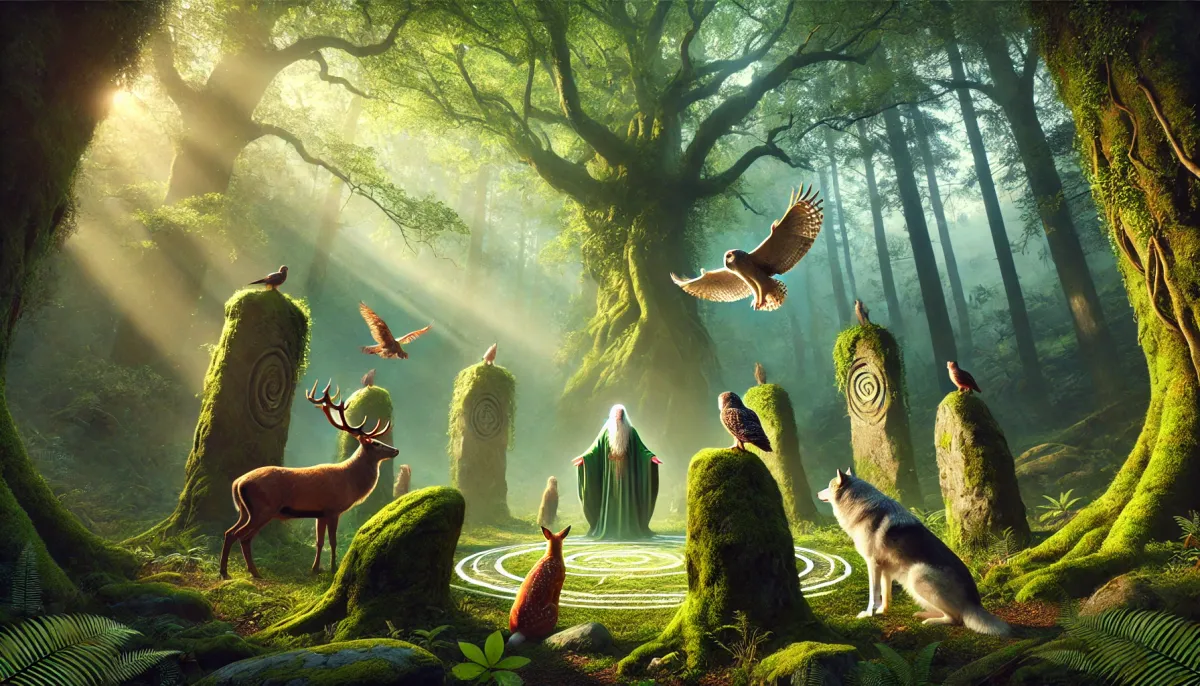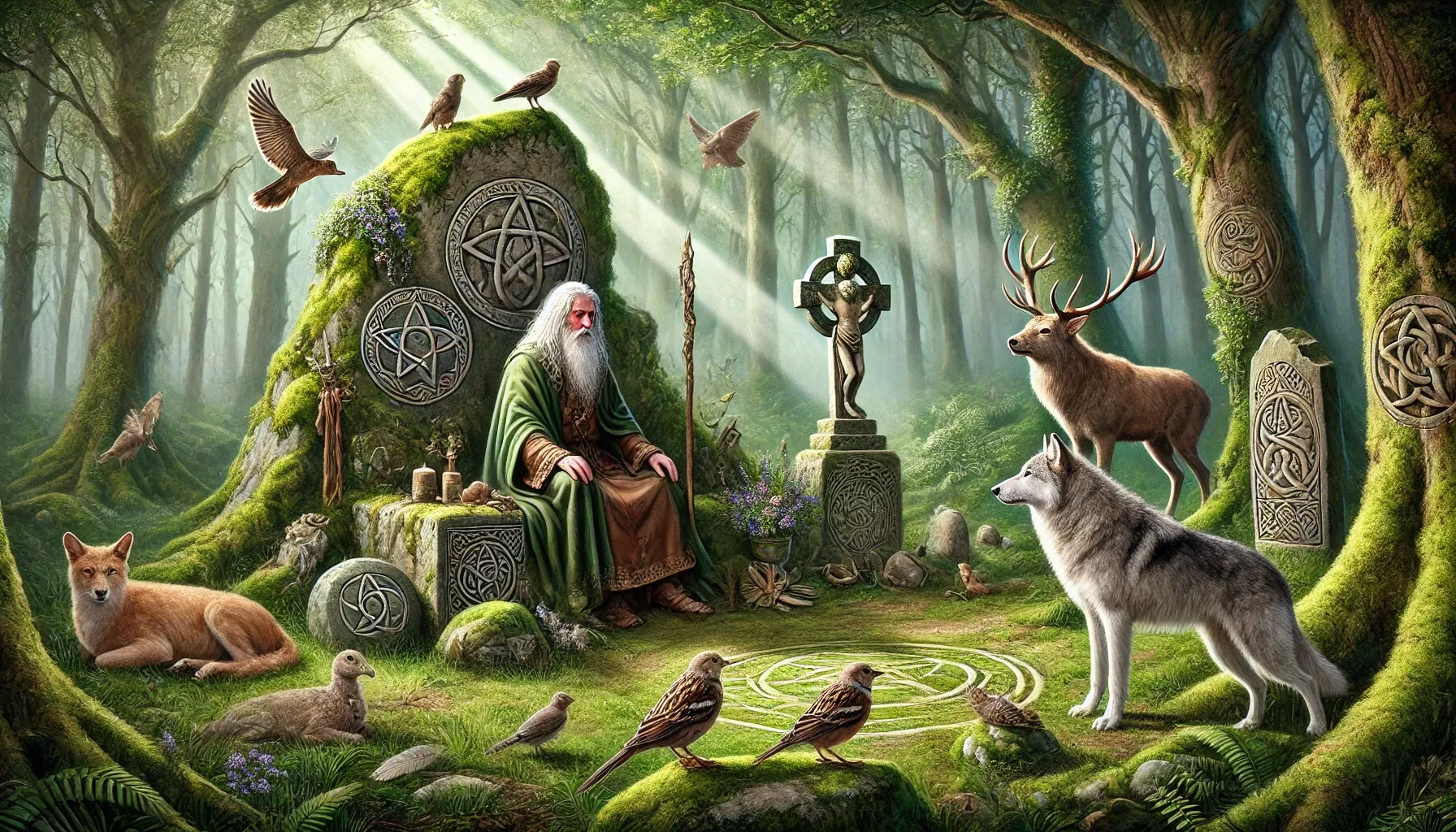The Druid's Circle: An Exploration of Human-Animal Communication and Natural Harmony
Discover the ancient wisdom of the Druids and their profound connection with nature and animals. Explore the historical roots, symbolic meanings, and modern interpretations of Druidic traditions that highlight harmony, respect, and stewardship of the natural world.

The concept of a Druid's Circle evokes images of ancient wisdom, a deep connection to nature, and a unique understanding of the animal kingdom. While shrouded in some mystery due to the passage of time and the blending of historical fact with folklore, the core idea of Druidry centers around reverence for the natural world and a belief in the interconnectedness of all living things.
This exploration will focus on the informational aspects of the Druidic tradition, particularly regarding their relationship with animals.
Historical Context and the Druids:
The historical Druids were members of the priestly class in ancient Celtic societies of Western Europe, particularly in Gaul (modern-day France), Britain, and Ireland.
They were intellectuals, philosophers, poets, judges, and religious leaders. Our knowledge of them is fragmented, primarily coming from Roman accounts (often biased) and later Irish and Welsh literature.
While direct, detailed accounts of Druidic practices regarding animals are scarce, the available evidence suggests a profound respect for the animal kingdom. Animals were integral to Celtic mythology, symbolism, and daily life.
They were seen as messengers from the Otherworld, possessing unique powers and wisdom.
The Concept of Animal Communication:
The idea of Druids communicating with animals is a recurring theme in folklore and modern interpretations of Druidry. This communication is often portrayed as more than simply observing animal behavior; it's depicted as a form of interspecies dialogue, a sharing of understanding that transcends language barriers.

It's important to differentiate between literal, and verbal communication and a deeper understanding of animal behavior and ecology. While the idea of "talking" to animals is largely within the realm of myth, Druids likely possessed a keen awareness of animal behavior, tracking, and the natural world. Others could have interpreted this deep understanding as a form of special communication.
Possible Interpretations of Druidic Animal Connection:
Several interpretations of the Druids' relationship with animals can be considered:
- Observational Expertise: Druids, living near nature, would have developed exceptional skills in observing animal behavior. They would have understood animal tracks, calls, and other signs, allowing them to predict animal movements, understand their needs, and interact with them respectfully and knowledgeably. This deep understanding could be perceived as a form of communication.
- Symbolic and Spiritual Connection: Animals held significant symbolic meaning in Celtic culture and Druidic beliefs. Certain animals were associated with specific deities or qualities, such as the boar with strength, the raven with prophecy, and the stag with the forest. This symbolic connection could have fostered a sense of spiritual kinship with animals, influencing their interactions.
- Ritual and Ceremony: It's possible that Druids performed rituals or ceremonies involving animals, perhaps to honor them, seek their guidance, or connect with the spiritual forces they represented. These rituals may have involved symbolic actions, offerings, or the use of animal parts in ceremonial objects.
- Stewardship and Conservation: Given their reverence for nature, Druids likely played a role in managing natural resources and promoting sustainable practices. This could have involved working with animal populations, ensuring their well-being, and maintaining the balance of the ecosystem.
Harnessing the "Power" of Nature:
The phrase "harnessing the power of nature" should be interpreted carefully. In the context of Druidry, it doesn't imply domination or exploitation. Rather, it suggests working in harmony with natural forces, understanding the interconnectedness of ecosystems, and sustainably utilizing natural resources.
This could involve:
- Understanding ecological principles: Druids likely possessed a deep understanding of natural cycles, such as the seasons, weather patterns, and plant and animal life cycles. This knowledge would have allowed them to predict natural events and manage resources effectively.
- Utilizing natural resources sustainably: Druids would have understood the importance of preserving natural habitats and avoiding overexploitation of resources. They may have practiced sustainable forestry, hunting, and gathering techniques.
- Working with animals in practical ways: This could have involved using animals for transportation, agriculture, or other tasks, but always with respect for their well-being.
Modern Interpretations and Practices:
Modern Druidry encompasses a variety of traditions and beliefs, some of which emphasize a closer connection to animals. Some modern Druids may practice animal communication techniques, such as meditation, visualization, or spending time in nature observing animal behavior. Others may focus on animal welfare, conservation, and promoting the ethical treatment of animals.
While the nature of the Druids' relationship with animals remains somewhat shrouded in mystery, it's clear that animals played a significant role in their culture, beliefs, and practices.
The idea of Druids communicating with animals highlights their deep respect for the natural world and their understanding of the interconnectedness of all living things. Whether interpreted literally or symbolically, this connection is a powerful reminder of the importance of respecting and protecting the animal kingdom and the natural environment.
The core principles of respect, harmony, and stewardship remain relevant today, offering valuable lessons for our relationship with the natural world.